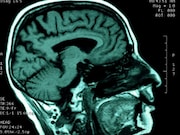Correlation highest for UTI; smaller-magnitude associations seen for UTI with intracerebral hemorrhage
FRIDAY, June 28, 2019 (HealthDay News) — Different infection types, especially urinary tract infection (UTI), are associated with subsequent acute ischemic stroke, according to a study published online June 27 in Stroke.
Solly Sebastian, from the Icahn School of Medicine at Mount Sinai in New York City, and colleagues used data from the New York State Inpatient Databases and Emergency Department Databases for 2006 to 2013 to examine the correlations between different infection types and stroke subtypes. Odds ratios were estimated for the correlation between each infection type (skin, UTI, septicemia, abdominal, and respiratory) during case periods with control periods one year before.
The researchers found an increased likelihood of acute ischemic stroke in association with every infection type. The greatest correlation was seen for UTI, with an odds ratio of 5.32 within the seven-day window. Associations of smaller magnitude were seen for UTI and intracerebral hemorrhage, with odds ratios of 1.80 and 1.54 in the 14-day and 120-day exposure periods, respectively. Of the infection types, only respiratory infection was associated with subarachnoid hemorrhage, with odds ratios of 3.67 and 1.95 in the 14- and 120-day windows, respectively.
“These findings suggest that there could be implications for vaccination, antibiotic regimens, or intensive antithrombotic treatments not only to prevent the infections but to prevent stroke in those who are deemed high-risk,” one coauthor said in a statement.
Copyright © 2019 HealthDay. All rights reserved.








